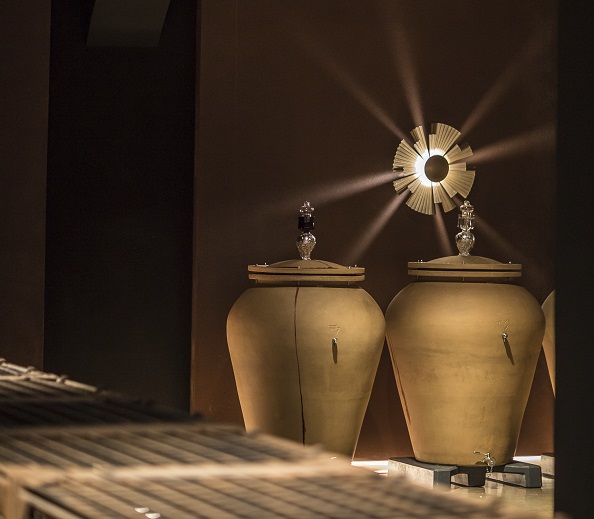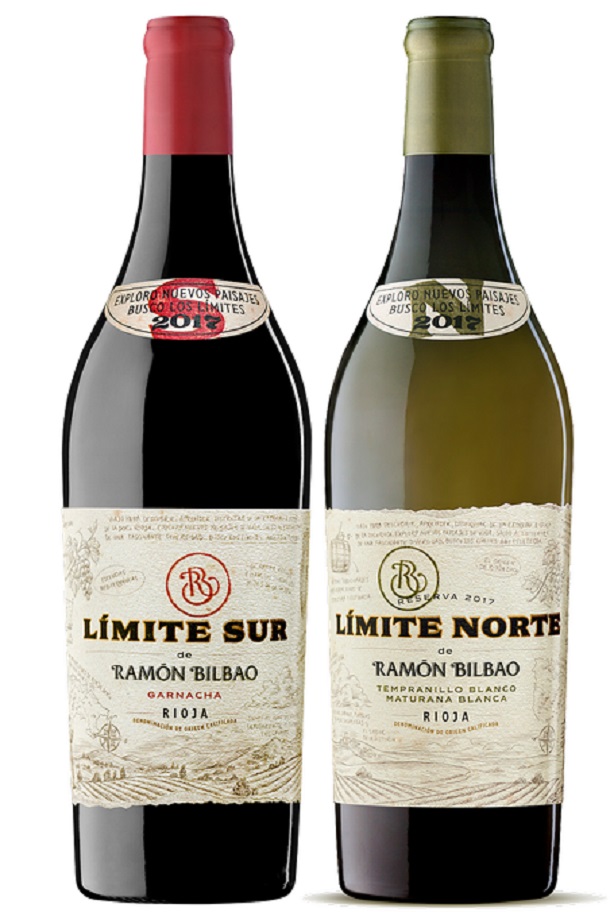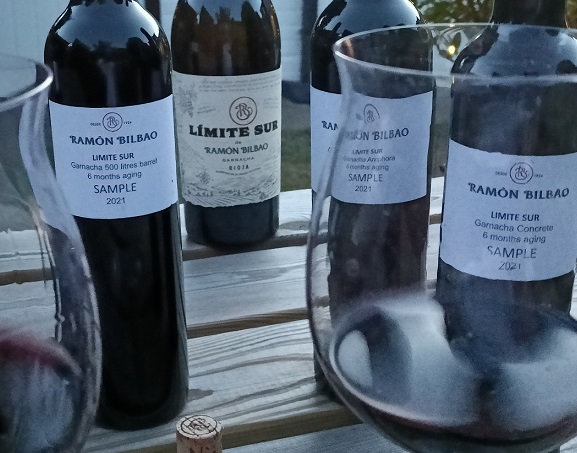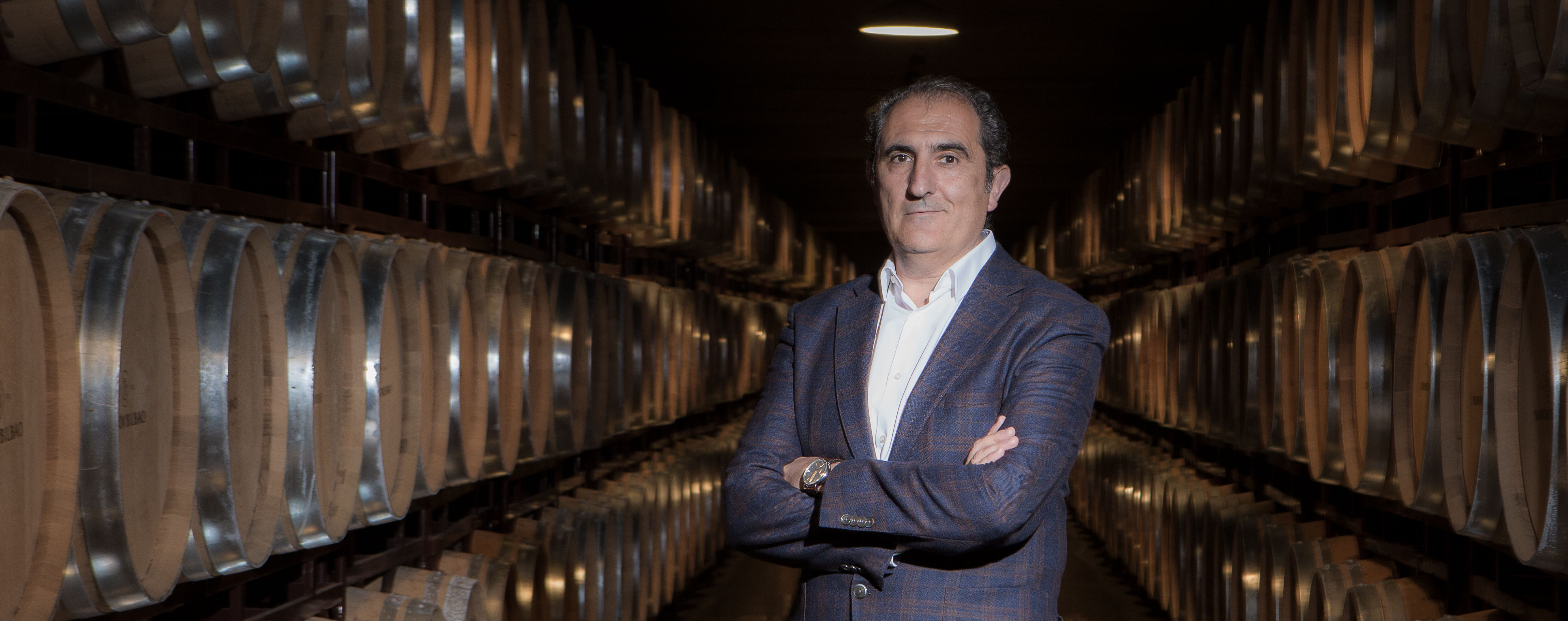Both also feature unusual grapes for modern La Rioja. The white is a co-ferment of 50% Maturana Blanca and 50% Tempranillo Blanco; the red is a Garnacha. The grapes also come from high-altitude vineyards in extreme corners of Rioja.
The red Límite Sur comes from the Monte Yerga vineyards in the south of the region; the white Límite Norte is from the north of the region. Together they show the diversity and richness of La Rioja.
This has been one of the goals of Rodolfo Bastida since he joined Ramón Bilbao as head winemaker in 1999 and started pushing the boundaries of what’s possible in the region where he was born and raised. While respecting local traditions, he believes the future lies in trial and exploration – such as high-altitude vineyards and moving away from American oak barrels.
“In my 23 years with Ramón Bilbao, I’ve explored all four corners of my home region – and am still doing so,” he says. “So much has changed in that time, particularly the climate: what was once impossible for grapes in the north now gives freshness and zest; where Garnacha was a lost grape in Rioja, it now makes elegant, fruit-driven reds when grown at altitude.
“Límite Norte and Límite Sur are our way of showing that Rioja still has lots of possibilities to explore beyond the traditional classification.”

The choice of vessels
Here’s what Rodolfo has to say about each of the materials they use.- Concrete has excellent thermal insulation properties for fermentation while for ageing it gives a “more pure and fresh wine”. Concrete vats also perform well at the settling and clarification stages, and give “less oxidation problems”, he says.
- Amphorae offer controllable micro-oxygenation, clean and pure aromas in white wines, and good colour stability in reds (the result of good polymerisation of the tannins and anthocyanins). Ramón Bilbao’s amphorae (above) come from Italian manufacturer Tava. Tava’s most popular amphora has an average oxygen transfer rate (OTR) of 1.5 mg/L/month (porosity 0.05 μm) which is higher than in studies of oak barrels (for example, 0.94 mg/L/month for American oak and 0.68 mg/L/month for French oak). But, if required, Tava’s amphorae can be customised with levels as low as 0.4 mg/L/month and as high as 10 mg/L/month. Rodolfo says their amphorae “add a big quantity of micro-oxygenation – but approximately 50% less than barrels”.
- Barrels, with their micro-oxygenation and oak tannins, add tertiary aromas and a creamy character – but can mask fruity aromas and terroir, he points out.

Límite Norte
Límite Norte is a 50/50 blend of Maturana Blanca and Tempranillo Blanco from a 2.5ha vineyard on a plateau at 450m altitude. The extreme continental climate of Cuzcurrita del Río Tirón means it is one of the last places in Rioja to be harvested (in early October).The choice of grapes is unusual. The ancient variety Maturana Blanca now accounts for just 0.6% of grapes in Rioja while Tempranillo Blanco – a natural mutation discovered in a vineyard in Murillo de Rio Leza in 1988 – accounts for 12.5%.
This wine is a co-fermentation even though the Tempranillo Blanco ripens a couple of days earlier.
Once in the winery, the Maturana Blanca is cold-soaked for 24 hours “to help to extract the primary aromas and tannins”.
Blended with Tempranillo Blanco after a slow pressing, the must ferments spontaneously in a concrete vat where the temperature is set at 24°C. After the fermentation, the gross lees are left to settle until the beginning of the following year (about three months after the fermentation). The wine is then racked with fine lees to a mixture of concrete, amphorae and 500L casks (a third each) for six months’ ageing before blending and racking to 225L French oak casks for another six months of ageing. The final stage is about 14 months in bottle.
Rodolfo says: “Maturana provides the aroma and acidity… while Tempranillo Blanco gives volume and texture for greater smoothness and less acidity on the palate – plus, it integrates the flavours developed in the cask.”
The Maturana element particularly benefits from “ageing in materials which are permeable to oxygen… enabling the wine to become rounded and smooth through its ageing in contact with fine lees”.
With this wine Rodolfo says the concrete is important for keeping the floral aromas, fresh flavours and long finish, while the amphora is important for citrus and pear characters, mouthfeel and persistency. The 500L barrels add complexity and “the creamy character”.
The final wine is a blend of equal parts of the three components. “But in the future we can change because the new idea for Límite Norte is maybe fermenting separately the two grapes and maybe change the percentages of the two grapes,” Rodolfo says during a Zoom call (below).
“There are no rules for this type of wine,” he adds.

Límite Sur
Límite Sur is a Garnacha with grapes selected from a 90ha “dream parcel” at 560 to 600m altitude in Monte Yerga, in the south-east of the region where the climate is fully continental. “Until the 1970s, Garnacha was the grape for Rioja but now Tempranillo accounts for almost 90% of plantings because it has been so reliable in the plains and valleys. But we grow our grapes at altitude and have developed a bit of a manifesto for winemaking with Garnacha: lower temperatures for fermentation to preserve floral character, and only a gentle extraction with shorter pump-overs. The altitude means the grapes already have the freshness that we are looking for, and then we perform our signature move of using oak in moderation – and in bigger formats so we don’t over-oak or hide the grapes’ character.”Asked to expand on the Garnacha winemaking, Rodolfo says: “If you ferment at very high temperatures you will obtain a rustic wine and you lose floral character. At the same time, it’s more sensitive to oxidation and you have to take care of this part too. At the end, the colour is going to be lower and you need to balance the lower anthocyanins and the lower tannins that the grapes have by maybe using a few stems during the fermentation. And also take care of the quantity of oak you are introducing for the fermentation and ageing process because they take very fast the floral aroma.”
- The grapes are picked with a potential alcohol of 14% and pH of 3.15-3.2.
- Most are destemmed but 5-10% of stems are used (5% in 2018) to provide the Garnacha, which is lower in polyphenols, with “freshness and extra tannins”. “Our best experiences are maximum 10%,” Rodolfo advises.
- The grapes are chilled to 10°C for processing and a pre-ferment maceration “to give floral aromas and colour extraction”. When they put the chilled grapes in the concrete tank, it can take about six days for them to reach around 18°C and for the spontaneous fermentation to get under way.
- They set the temperature of the tank at 24°C – well below the 30°C that Ramon Bilbao uses for its Tempranillo – to “guarantee the temperature is not going to be very high”.
- After fermentation – and when the malolactic conversion ends – they add “a touch of sulphur”, press the berries using a water-filled bag in the tank, and rack the juice to different vessels for “different influences”.
- Rodolfo sums up these influences: the concrete and clay gives purity; the barrel adds complexity.
- After six months, the components are reunited for 12 months’ further ageing in used French oak barriques to naturally clarify and stabilise the wine. “These barriques do not add additional aspects to the wine; this period is very interesting in terms of polymerisation, sediment… I’m thinking more of the purity of the wine, the softer evolution in terms of adding micro-oxygenation, more than taking oaky flavour,” he says.

I was able to try the 2021 components with Rodolfo.
The wine in concrete had intense aromas of violets and raspberry. It was juicy, fresh, pure and low in tannins.
The floral aromas in the amphora wine were even more intense. “I love the herbal character,” Rodolfo comments. It reminds him of the smell in the vineyards around harvest time. This is the component I would happily drink on its own.
The wine from barrel had evolved faster than the rest. There were tertiary aromas such as vanilla and a slightly bitter note on the finish which, Rodolfo says, “adds complexity to the wine”. He continues: “If you have more quantity of stems in the fermentation this (bitter) characteristic is going to increase” and the wine will lose its balance.
Prior to knowing that the wine comprises equal parts of all three components, I played around with the blend and settled on 40% from concrete, 40% from amphora and 20% from oak. Rodolfo thinks they may play around with the percentages in the future but he told me the 2021 version of Límite Sur still has a long way to go: “This wine we are going to bottle maybe in the middle of next year, so we need to give it more time for ageing in the three materials and the final barrels before bottling.”













.png)






